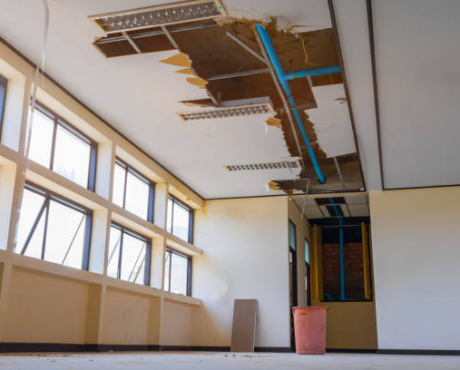Tuesday 21st December 2021
Escape of Water
Water – one of the biggest financial risks facing the construction industry
The impact of Escape of Water (EoW) on construction sites is one of the most damaging and expensive issues affecting the industry today. The scale of the problem is perhaps best illustrated by data from the Association of British Insurers (ABI) which shows that EoW insurance claims amount to approximately £2.5 million a day, or nearly £1 billion a year* – and these continue to grow in both size and volume annually.
Delayed project handovers: a threat to long-term profitability
Most escape of water catastrophes occur at the final fit-out phase, when the water systems are being tested and the project is close to handover. When a leak occurs, the construction project handover is delayed, leaving the future occupier to deal with the consequences. Delayed handover to organisations such as shops, hotels and residential housing blocks will inevitably have a knock-on effect in terms of loss of sales and future income, damaged stock, disruption to supply chains, costly building repairs and brand / reputation damage associated with lost trade. Construction firms that don’t implement robust risk management plans to mitigate this risk; will potentially face long-term profitability problems, payment of insurance excesses and potentially increased insurance premiums in the future. As an experienced construction insurance broker, we can help navigate the insurance process and provide advice regarding the risks facing the industry, and how to manage your insurance risks going forward.
Report leaks faster: reduce the cost of damage and delayed site handovers
Water leaks aren’t always obvious. Some leaks start as what appears to be a slow seepage of water on the surface, as opposed to the more obvious rapidly flowing, high-pressure water leak. Be vigilant for signs such as damp patches which can often be ignored for longer periods, while the full impact of the leak is hidden in the voids behind the walls. Most commercial developments are larger premises with multiple levels, so regular checks and reporting of any water damage incidents to your insurance broker can significantly reduce the spread of water and therefore reduce disruption and costly damage.
Neon Mavromatis, Managing Director Construction, explains why early reporting is vital, “We encourage our clients to report a water leak immediately; reporting a leak within half an hour as opposed to just two or three hours later, can drastically reduce the damage and therefore interruption to work caused by an escape of water.”
Water damage: tackle the causes
Whilst the causes of water damage are wide-ranging, the Construction Insurance Risk Engineers Group (CIREG) note that the inconsistent quality of workmanship and lack of risk management planning during construction, is unfortunately the most common cause of EoW claims**. They highlight that awareness of the risks posed by water leaks is lower and therefore taken less seriously than fire or other severe hazards. Finally, insufficient testing of the multiple water systems installed within commercial building developments, is another common contributing factor.
Mavromatis continues, “By raising awareness of this widespread problem within the industry and creating a risk management procedure for employees; construction firms can significantly reduce future risks and minimise the unexpected delays and costs caused by delayed project handovers.”
Robust risk management plans
The cost pressures of a competitive marketplace combined with skill shortages, can impact a contractor’s and subcontractors ability to invest in risk managing their exposure to water damage. Add in other considerations such as modern methods of construction (MMC) including bathroom pods, underfloor heating systems and en-suite facilities, and suddenly the volume of water related features (and risks) has grown exponentially. The following steps will help construction firms manage this issue:
1. Develop a water damage management and emergency plan and ensure onsite employees are trained to use it, especially in the event of an incident.
2. Factor escape of water incidents into business continuity plans.
3. Install water leak technology and ensure it is used properly. Some systems can be programmed to cope with unoccupied premises, so they don’t rely on human intervention to turn off the water supplies in the event of a leak. The initial cost of such systems will be far outweighed by a water damage incident.
4. Put in place robust systems to ensure contractors are qualified and professionally registered.
5. Thoroughly pressure test all plumbing systems and conduct regular inspections before handing over unoccupied buildings.
We’re here to help
Contact us for advice regarding the best insurance to suit your construction risk needs on 020 8225 1165 or email us on sales@kerrylondon.co.uk
* ABI property claims working group data, 30 April 2019, ABI.
“This note is not intended to give legal or financial advice, and, accordingly, it should not be relied upon for such or regarded as a comprehensive statement of the law and/or market practice in this area. In preparing this note we have relied on information sourced from third parties and we make no claims as to the completeness or accuracy of the information contained herein. You should not act upon information in this bulletin nor determine not to act, without first seeking specific legal and/or specialist advice. We and our officers, employees or agents shall not be responsible for any loss whatsoever arising from the recipient’s reliance upon any information we provide herein and exclude liability for the content to fullest extent permitted by law.”
Categories: Uncategorised,

